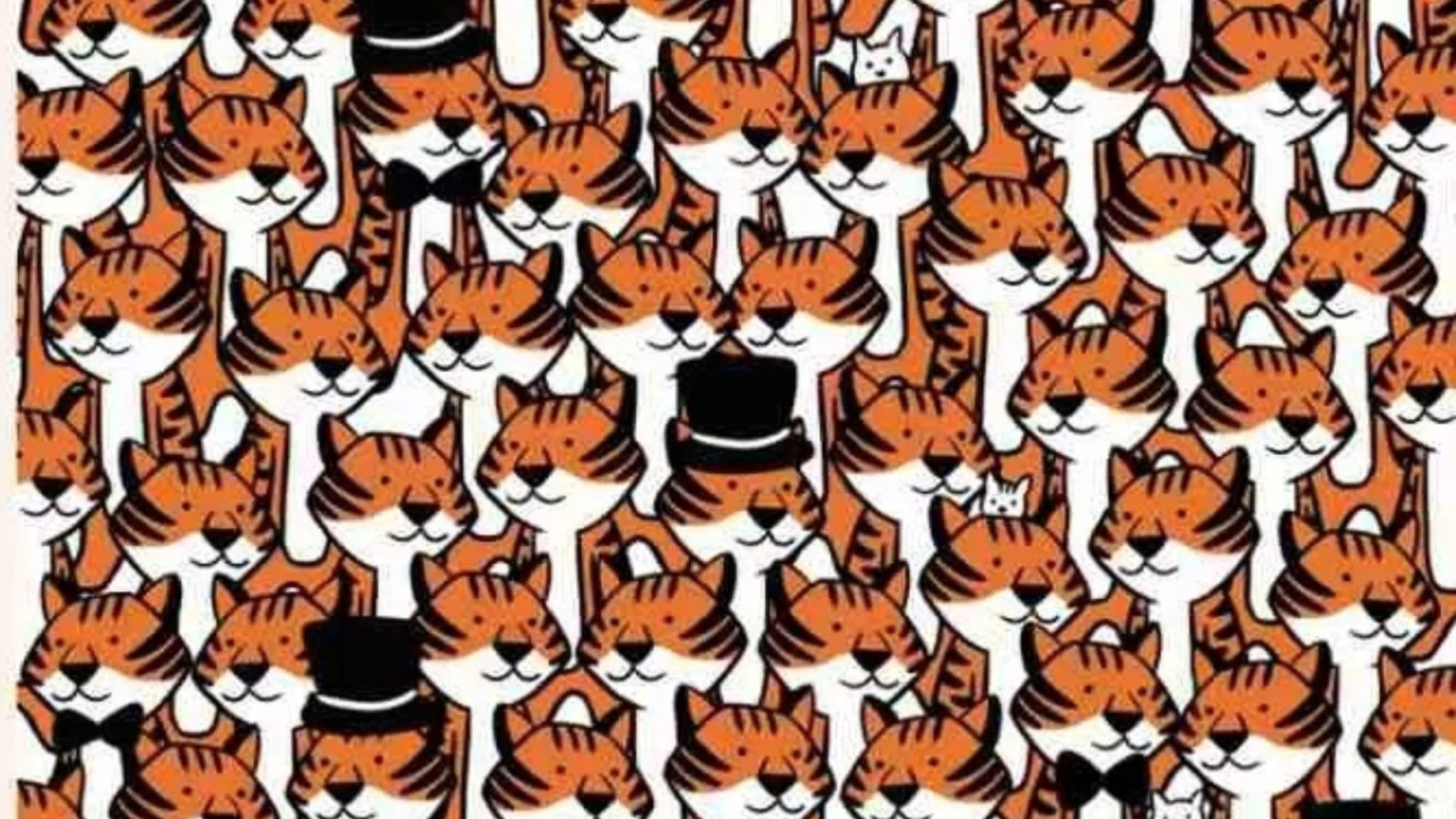This article presents a visual puzzle featuring an image of numerous tigers, some adorned with party attire like top hats and bow ties, with the challenge of finding four hidden cats within the scene. The task is presented as a test of visual acuity and quick thinking, with a time limit of 12 seconds proposed as a benchmark for those with particularly sharp eyes. The article emphasizes the deceptive simplicity of the image, noting that the cats are cleverly camouflaged, blending in with the white background and the light-colored bellies of the tigers. To assist those struggling to locate the feline quartet, the article provides clues, revealing that the cats are white with black noses and eyes and that two of them are positioned near the bottom of the image. The article then transitions into a discussion of the cognitive benefits of engaging with optical illusions and brain teasers.
Optical illusions and brain teasers are touted as valuable tools for enhancing cognitive function. They are described as stimulating various brain regions, promoting mental agility and flexibility. The act of deciphering these puzzles necessitates analytical thinking and problem-solving skills, thereby honing these abilities through regular practice. Memory recall, a crucial component in many such puzzles, is also strengthened. Furthermore, the article suggests that these activities foster creativity by encouraging “thinking outside the box” and innovative approaches. The need for concentration when tackling optical illusions and brain teasers is linked to improved focus and attention span. Finally, the enjoyable aspect of these puzzles is highlighted as a potential source of stress relief and relaxation. The article reinforces the idea of a comprehensive cognitive workout, asserting that these activities stimulate multiple areas of the brain simultaneously.
For those unable to locate all four cats within the allotted time or those simply curious about the solution, the article promises the answer further down, encouraging readers to test their skills with additional brain teasers. These supplementary puzzles continue the animal theme, featuring challenges such as finding five guards with triangle markings on their masks among a crowd and identifying eight different animals within a complex image. Another puzzle tests visual acuity by asking readers to locate a lemon amidst a collection of other fruits, again with a short time limit. The article provides solutions to these additional puzzles as well, including visual aids like circled answers.
The structure of the article uses the initial cat-finding puzzle as a hook to draw readers in and then segues into a broader discussion of the benefits of brain training activities like optical illusions and puzzles. By offering multiple puzzles of varying difficulty and themes, the article aims to engage a wider audience and cater to different interests. The inclusion of time limits adds an element of competition and encourages quick thinking, while the provision of clues and solutions ensures that the puzzles remain accessible and provide a sense of accomplishment even for those who initially struggle.
The article emphasizes the multifaceted benefits of engaging with visual puzzles and brain teasers, positioning them not only as entertaining diversions but also as valuable tools for cognitive enhancement. The repeated emphasis on the cognitive benefits suggests a target audience interested in self-improvement and maintaining mental sharpness. The article’s format, with its combination of visual challenges and explanatory text, caters to visual learners and those seeking a more interactive and engaging learning experience. The article’s structure also reflects a common strategy in online content creation: using an engaging puzzle or quiz to draw readers in and then transitioning to related information or topics, in this case, the broader benefits of brain training activities.
The inclusion of multiple puzzles, each with its own unique challenge, suggests an intent to maximize reader engagement and provide a more comprehensive experience. The varying themes and difficulty levels cater to a diverse audience and ensure that there is something for everyone. The emphasis on time limits adds an element of gamification, encouraging readers to compete against themselves and strive for faster completion times. This gamified approach can increase motivation and make the experience more rewarding. The provision of clues and solutions further enhances accessibility, preventing frustration and ensuring that readers can enjoy the puzzles regardless of their skill level. This inclusive approach encourages continued engagement and fosters a sense of accomplishment even for those who initially struggle.











